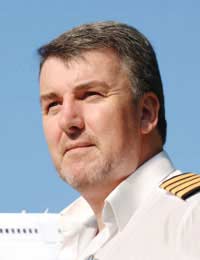How Pilots Train for all Possible Scenarios

A modern mid-range aircraft costs around £50m. With such an expensive machine under their control, not forgetting the lives of over 100 passengers and crew, commercial pilots have a lot of responsibility on their shoulders. They need to know how to fly the aircraft, but they also need to be able to respond competently should things go wrong.
Training to be a pilot is an exciting but demanding process. Although it doesn’t take very long to qualify with a Commercial Pilots License (CPL) – it can be done in less than 18 months – this is only the first step. After passing the CPL, newly qualified pilots join airlines where their training continues. They have to learn about company procedures, and have to understand how the airline operates. New pilots will be allocated an aircraft type, e.g. an Airbus, or Boeing 737. Type training will then commence and only once the instructors are satisfied that the pilot is competent will they be given a proper job, with passengers and crew.
Basic Training
The first stage of a pilot's training is usually learning to fly a basic aircraft, such as a light, single-engine aircraft. Actually, flying the machine is relatively simple once the basic principles of flight are understood. The trickiest part of flying is learning how to cope with emergencies.A whole range of different emergency scenarios are practised. For example, pilots learn how to control and land an aircraft that has lost power in the engine. They practise re-starting engines and they practise landing with engines on fire (simulated, of course!).
Taking off and landing an aircraft is practised over and over until the new pilot is competent and able to perform these tasks smoothly and completely in control.
The Big Day Arrives!
The aviation syllabus for pilot training requires that pilots undertake a solo flight. This is a big step in the learning process and is often one of the most nerve-racking occasions of the entire training course. The day arrives when the instructor says, ‘ok, that’s it – I am leaving you to take-off, fly around the airfield and land again, all on your own’. This milestone in training marks a point where the syllabus changes from learning to fly a basic aircraft, to learning about navigation and advanced flying techniques.Navigation
Although all commercial aircraft are fitted with modern navigational instruments and global positioning systems, pilots must learn to navigate by more traditional methods. Map reading and route plotting are essential aspects of the training programme; in fact the initial flying test that pilots take involves plotting a route given to them by their instructors and then flying the route to see if it works out correctly.Ground School
Learning to fly the aircraft and learning to cope with emergencies are important aspects of the process, but so too is learning the theory. Pilots under training have to study numerous topics and have to pass exams in each one of those topics. These include: aircraft design and aerodynamics; navigation; aircraft systems; aviation law; human error; and meteorology.Passenger safety is the utmost priority for all airlines. By applying stringent training regimes for pilots and other crew members, airlines are able to carry out their business in the knowledge that their crews have been trained to extremely high standards, and in the knowledge that they are competent to bring the aircraft and passengers back to the ground safely, even in the most challenging circumstances.
- How Many Planes Are There in the Sky?
- Environmental Facts About the Air Travel Industry
- Why Aircraft Engines Don't Fail
- Aircraft: What are all the Checks For?
- What Keeps Such a Heavy Machine in the Air?
- What Are Those Noises Inside the Aircraft?
- Why is Turbulence Not Usually Dangerous?
- Doors to Automatic: What is That all About?
- How Do Aircraft Fly?


Re: Why Some People Have a Fear of Flying
A hydrofoil with a hull Is primitive, rather dull; Must not it sink Should engines kink? Airplanes crash and crack…
Re: Aerophobia Clinics and Courses
I am absolutely petrified of flying however I have agreed to fly in July to Spain. I am flying with my two young children, both…
Re: Anxiety Medication
Please help I'm absolutely terrified of flying and I go away in two wks , I really don't know how I'm going to cope I have tryed diazepam in…
Re: What Causes The Fear of Flying?
My 13 year old daughter is now so afraid of flying that we were unable to go on our last holiday in March. We arrived at the…
Re: How I Overcame My Fear of Flying: A Case Study
At Southport we were flying to Ostend in a Bristol44 aircraft It taxied along the runway ,just before…
Re: Doors to Automatic: What is That all About?
Very good I've always wondered what Doors to automatic and cross check means
Re: What is Aerophobia?
i dont have aerophobia but sky phobia…
Re: Hypnosis and Fear of Flying
The difficulty with phobias is that there are often underlying problems so that one phobia reveals another and so on. General…
Re: Why is Turbulence Not Usually Dangerous?
hi, i love flying but get really scared during turbulence…strange question but if you were looking at a plane that…
Re: Why Some People Have a Fear of Flying
I am terrified of flying... Over the sea especially :-(. We fe flying from London to Lisbon. So over the bay of…